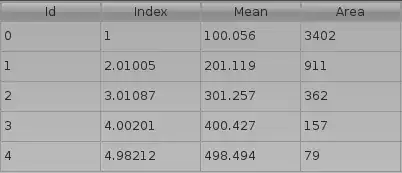You should see only one point.
These plots show (squared) skewness and kurtosis. If you have one sample, then you will have one value of skewness and one value of kurtosis for that sample -- i.e. exactly one point for one sample of data, not one point per observation within that sample.
It's perhaps a pity these are now so often called Cullen & Frey graphs; this name doesn't convey the information that they are plots of sample skewness (squared in this particular instance) and sample kurtosis. While they were sometimes called Pearson plots, another fairly common prior term for them was skewness-kurtosis plots, which does at least say what you're looking at.
Fortunately the help on the function you used to produce the plot does explicitly refer to the plot as a skewness-kurtosis plot.
The plot won't tell you a lot about your data though.
With only 5 data points you cannot expect to get much value out of the values of skewness and kurtosis, since they will have very large sampling error. The data will be consistent with a very wide range of Pearson distributions.
As Nick Cox rightly points out, the sample skewness is negative, so you would be looking to flip any distributions you considered with positive skewness = though again, with so few points, distributions with quite noticeable positive skewness could produce a sample with negative skewness pretty easily, so we should not read much into this in either direction.
